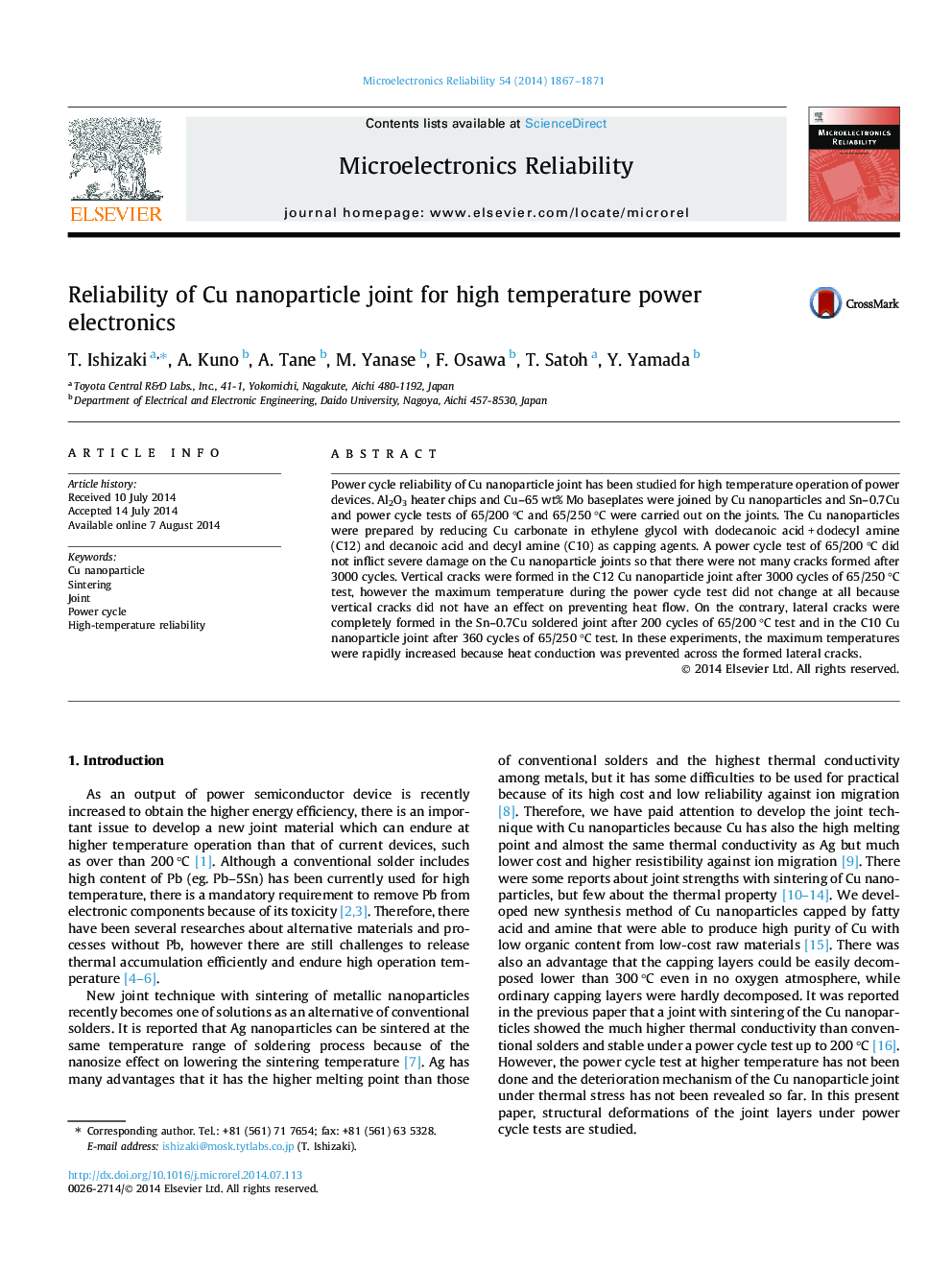| Article ID | Journal | Published Year | Pages | File Type |
|---|---|---|---|---|
| 6946865 | Microelectronics Reliability | 2014 | 5 Pages |
Abstract
Power cycle reliability of Cu nanoparticle joint has been studied for high temperature operation of power devices. Al2O3 heater chips and Cu-65 wt% Mo baseplates were joined by Cu nanoparticles and Sn-0.7Cu and power cycle tests of 65/200 °C and 65/250 °C were carried out on the joints. The Cu nanoparticles were prepared by reducing Cu carbonate in ethylene glycol with dodecanoic acid + dodecyl amine (C12) and decanoic acid and decyl amine (C10) as capping agents. A power cycle test of 65/200 °C did not inflict severe damage on the Cu nanoparticle joints so that there were not many cracks formed after 3000 cycles. Vertical cracks were formed in the C12 Cu nanoparticle joint after 3000 cycles of 65/250 °C test, however the maximum temperature during the power cycle test did not change at all because vertical cracks did not have an effect on preventing heat flow. On the contrary, lateral cracks were completely formed in the Sn-0.7Cu soldered joint after 200 cycles of 65/200 °C test and in the C10 Cu nanoparticle joint after 360 cycles of 65/250 °C test. In these experiments, the maximum temperatures were rapidly increased because heat conduction was prevented across the formed lateral cracks.
Related Topics
Physical Sciences and Engineering
Computer Science
Hardware and Architecture
Authors
T. Ishizaki, A. Kuno, A. Tane, M. Yanase, F. Osawa, T. Satoh, Y. Yamada,
